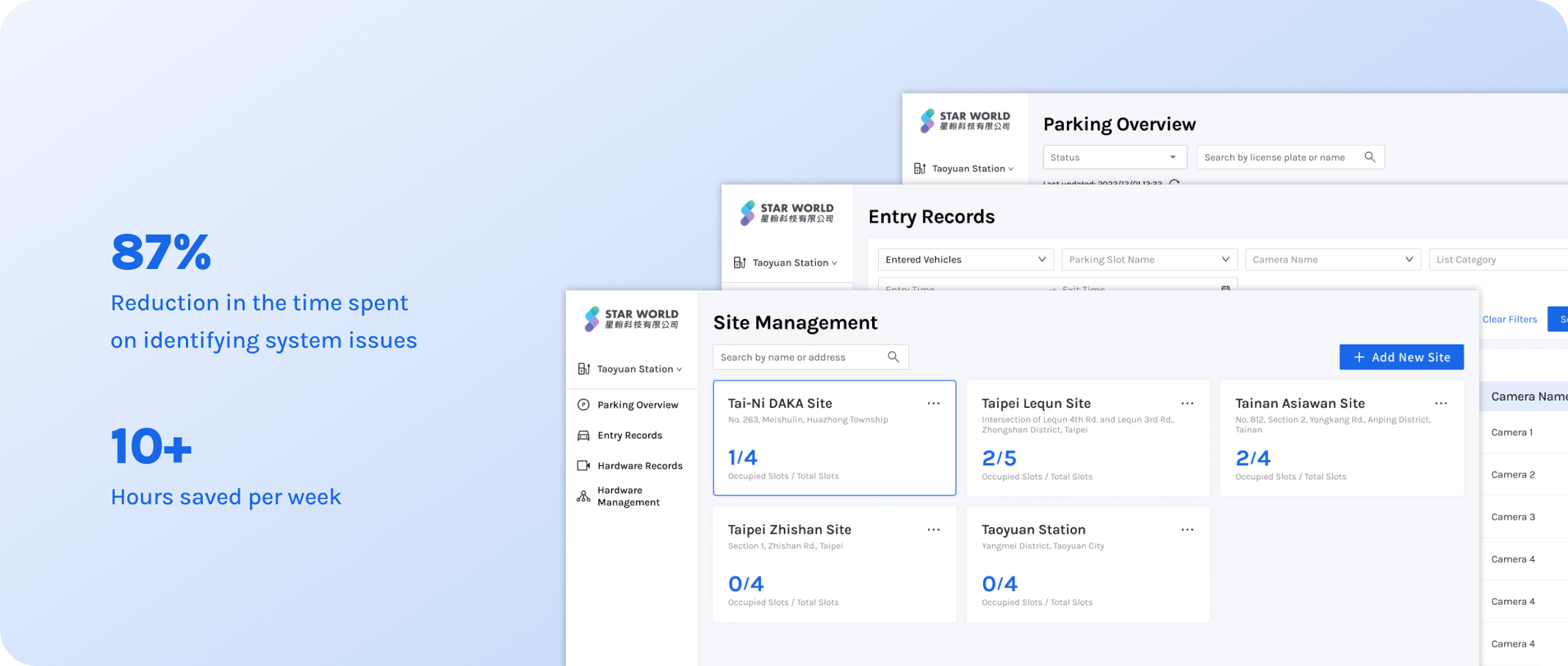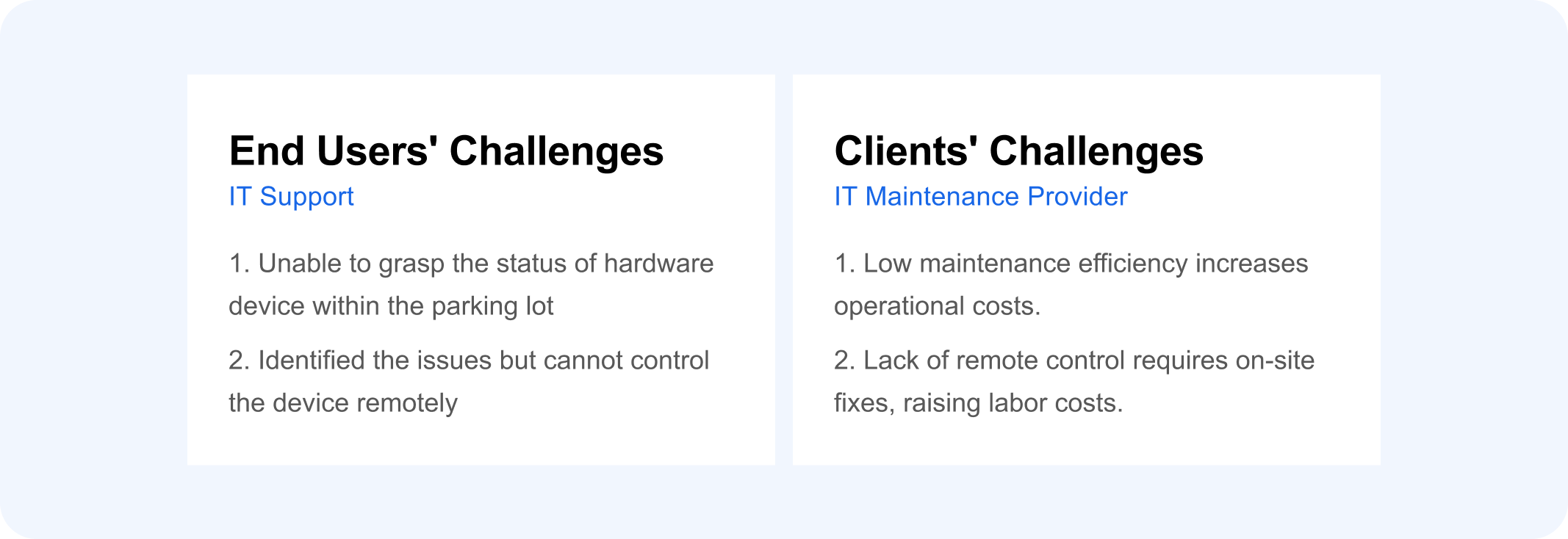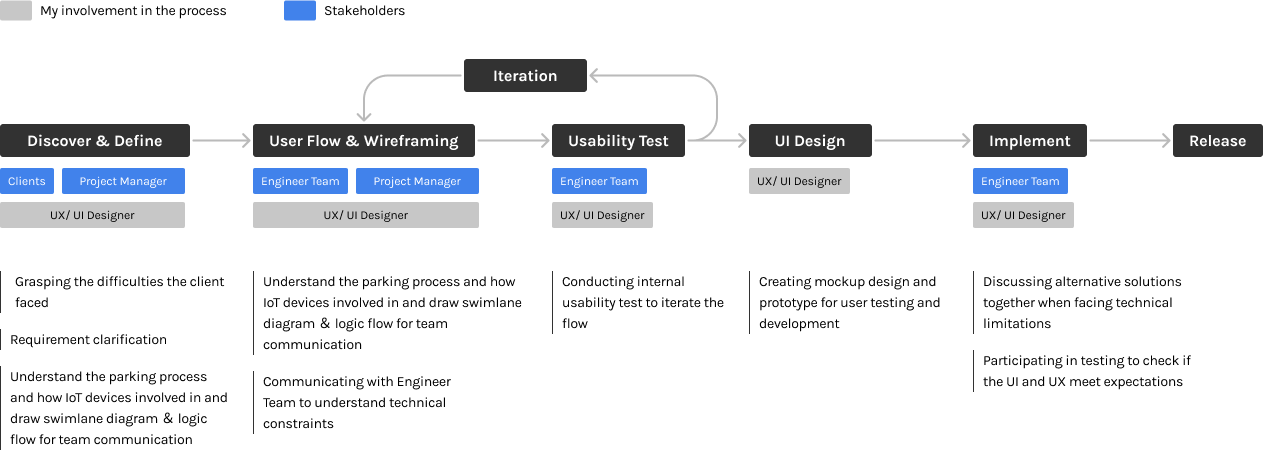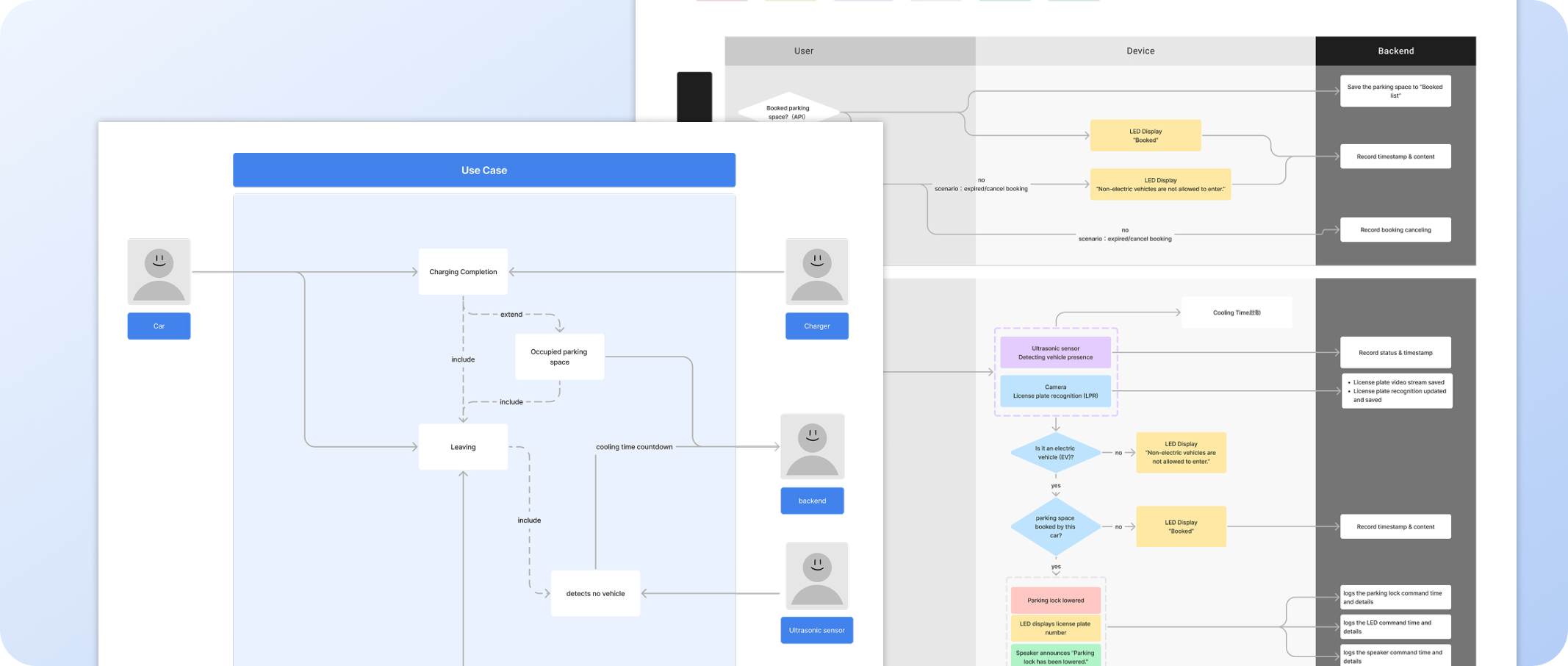Before implementing the new system, maintenance teams spent 15 hours per week diagnosing and resolving 20+ issues. With the system, troubleshooting now takes only 6–8 minutes per issue, reducing the total time to 2–3 hours per week. This resulted in a 87% reduction in the time spent on identifying system issues, 10+ hours saved per week.

Our client has established smart EV parking lots, but they have challenges in diagnosing issues within parking lots and controlling hardware devices remotely. Thus, they asked us for assistance with IoT support.


One of the key challenges in this project was the complex interaction between hardware devices and the software system. To improve team understanding, I created swimlane diagrams and use cases to visualize real-world scenarios and system workflows. These tools helped align the team’s understanding and made it easier to identify user pain points and optimize the troubleshooting process.

At the beginning of the project, the scope and requirements were unclear. This made it difficult for the team to decide what features to build and in what order.To address this, I created rough wireframes to communicate early ideas with clients and stakeholders. These visual drafts helped align expectations, define the core features, and narrow down the scope. It also supported the team in prioritizing tasks more effectively.